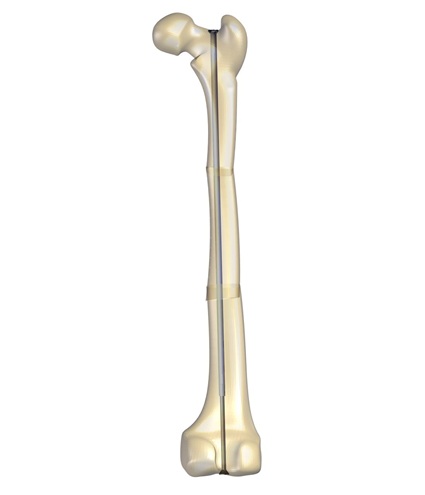A multiplanar deformity analysis can be both simple and complex: a correct determination of angular and metric deformity apex and plane is a fundamental task. This is true in both the preoperative surgery planning and the postoperative management phases, in order to obtain the most accurate correction and promote the quickest recovery for the patient’s well-being.
To analyze a multiplanar deformity for long bones (which are three dimensional) the surgeon has to determine the limb alignment through the angular and metric deformity apex, in the frontal, sagittal and oblique plane.(1) In brief, the surgeon has to assess the relevant parameters regarding the angular deformity, rotation, translation and axial translation.(2) (3) The apex of deformity is the point of intersection of the proximal and distal axes of the bone, from which translations should be calculated and corrections applied. Consistent X-rays are paramount for a correct deformity analysis to prevent measurements and magnification errors, compare and/or repeat X-rays when necessary.
The surgeon must look for the axis for hinges’ placement – it is fundamental to distinguish whether the mechanical or the anatomical axis of the bones are used to do the analysis. The mechanical axis has turned out to be more precise to detect deformities near the joint. Furthermore, it is necessary to identify the centre of the joints: in the lower limb the hip, the knee and the ankle. Once this step has been completed, the individual joint orientation lines and angles can be recognized and drawn in all planes to identify the deformed bones. If the osteotomy is performed at the level of the deformity apex, then the only correction needed is angulation. If the osteotomy is performed at a level proximal or distal to the apex, then translation in addition to angulation is necessary to accurately correct the deformity in the frontal plane. There are two basic osteotomy types for angular deformity correction: angulation-only osteotomy, and osteotomy with angulation and translation.(4)
Different types of orthopedic solutions can be applied to treat a multiplanar deformity. A monolateral frame is indicated when simple and straightforward correction is needed, in the presence of a monoplanar deformity, or when the deformity is “not under the knee”. In the case of a multiplanar deformity, experts recommend a circular external device.(5) (2) In some countries, due to the cost of the treatment, financial reasons might affect the surgeon and patient’s decision.(3) In the presence of a lower limb deformity – for instance in the femur, which is quite frequent – some experts recommend to apply an Ilizarov type frame, and particularly a hexapod frame, which develops itself in a three-dimensional space, guaranteeing more stability. The TL-HEX (TrueLok Hexapod System) designed by the Texas Scottish Rite Hospital for Children can be considered an upgrade of this concept. With up to 4 rings, secured to the bones by wires and half pins and interconnected by six struts, this dynamic, axis centric computer assisted frame offers a great range of movement in all planes and helps the surgeon to perform fast twofold adjustments in deformity correction thanks to the strut attachment to the rings, and in most cases allowing her/him to solve the patent’s problem with one surgery.(5) (2) (3)
The surgeon can estimate the role of the software in helping with both the preoperative planning and postoperative adjustments, measuring and inserting in the software the right parameters and data. Two orthogonal (90°) X-ray images must be uploaded to activate the working flow. The surgeon must determine the deformity apex, insert the reference segment, and consider the reference ring, which should be orthogonal to the reference segment, if possible. With the right parameters inserted, the software will generate an adjustment schedule to correct the deformity. It is mandatory to check the correction process periodically, as well as the patient’s understanding and full compliance with the adjustment schedule.(3)
References
- Lin H, Samchukov M et al. 2005. The multi-level angular deformity determination in 3D space with total curvature analysis for long bones. Conf Proc IEEE Eng Med Biol Soc; 2005:6172-5.
- Philip K. McClure, ICLL – International Center for Limb Lengthening, Rubin Institute for Advanced Orthopedics, Baltimore, Maryland, USA; from: www.orthofixacademy.com.
- Alexander Cherkashin, Center for Excellence in Limb Lengthening and Reconstruction, Texas Scottish Rite Hospital for Children, Dallas, Texas, USA, from: www.orthofixacademy.com.
- Paley D, Tetsworth K. 1992. Mechanical axis deviation of the lower limbs. Preoperative planning of uniapical angular deformities of the tibia or femur. Clin Orthop Rel Res; 280:48-64.
- Richard Luzzi, CERO – Centro de Excelência em Recontrução Óssea, Hospital Vita Linha Verde-Curitiba, Bairro Alto, Curitiba, Brazil, from: www.orthofixacademy.com.




